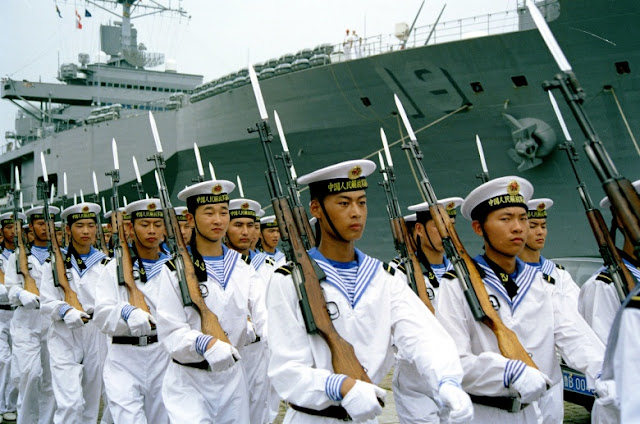South China Sea Fact: One of the Last Things South Vietnam Did Was Fight China
In January 1974, South Vietnamese forces clashed with the People’s Liberation Army Navy in the Paracel Island chain—a hot spot between China and present day Vietnam today.
The two countries had established their competing claims to the islands—which the Vietnamese refer to as Hoang Sa and the Chinese call Xisha—well before they came to blows. The South Vietnamese navy regularly chased foreign fisherman away in the 1960s under the umbrella of American military might.
But in 1973, the U.S. started cutting off support for the Vietnamese Republic. American negotiators cut deals with the North in Paris and Congress then cut aid to the South.
Beijing quickly quickly realized the situation was changing in their favor. Communist forces already controlled the northern half of the archipelago.
The People’s Liberation Army started seizing the other half without firing a shot—and without anyone even noticing. On Jan. 16, South Vietnamese officers and their American adviser stumbled on Chinese soldiers and ships already setting up shop on Drummond Island.
A platoon of South Vietnamese troops stationed on another island were completely unaware of the intrusion. When Saigon demanded that they leave, the Chinese asked them to do the same.
Despite their shrinking resources, South Vietnamese authorities could not let this challenge go unanswered. So the next day, 30 Lien Doan Ngoui Nhiacommandos—South Vietnamese SEALs—went ashore on another island and tore down a flag the Chinese had put up.
The People’s Liberation Army Navy responded by sending their own reinforcements. The stage was set for an altercation by Jan. 18.
The next morning, South Vietnamese Marines landed on yet another island to eject the Chinese there and all Hell broke loose.
Chinese forces killed three Marines in the ensuing firefight and forced them to quickly retreat back to their ships. Undeterred, the South Vietnamese vessels—including ex-U.S. Coast Guard cutters like those seen above—started firing at the PLAN boats nearby.
But the previous July, American legislators banned the Pentagon from engaging in combat in Southeast Asia. Without U.S. support, the South Vietnamese attack quickly turned into a disaster.
Beijing sent additional reinforcements to the area. Chinese aircraft bombed South Vietnamese troops who had gone ashore on other islands.
By the time the shooting stopped, one Vietnamese ship was heading to the bottom of the South China Sea and the rest were damaged. The Chinese were firmly in control of the islands and denied claims one of their ships had sunk.
The Vietnamese suffered over 50 casualties in the fighting. To add insult to injury, the Chinese held almost 50 prisoners, including an American adviser.
The prisoners were eventually released to the Red Cross in Hong Kong. At the end of the month, commercial ships and Vietnamese fishermen were still finding survivors of the battle floating in the ocean.
The aftermath of the battle is a clear prelude to today’s tensions. For one, South Vietnam made the matter a clear priority despite its dwindling military capabilities.
In addition, the North Vietnamese did not publicly support China’s forceful annexation of the Paracels. In 1975, the newly reunified Vietnam renewed the country’s claim to the islands.
The dispute continues to this day—and there could be another battle of the Paracels on the horizon.
(Source : nationalinterest.org)




Post A Comment
No comments :